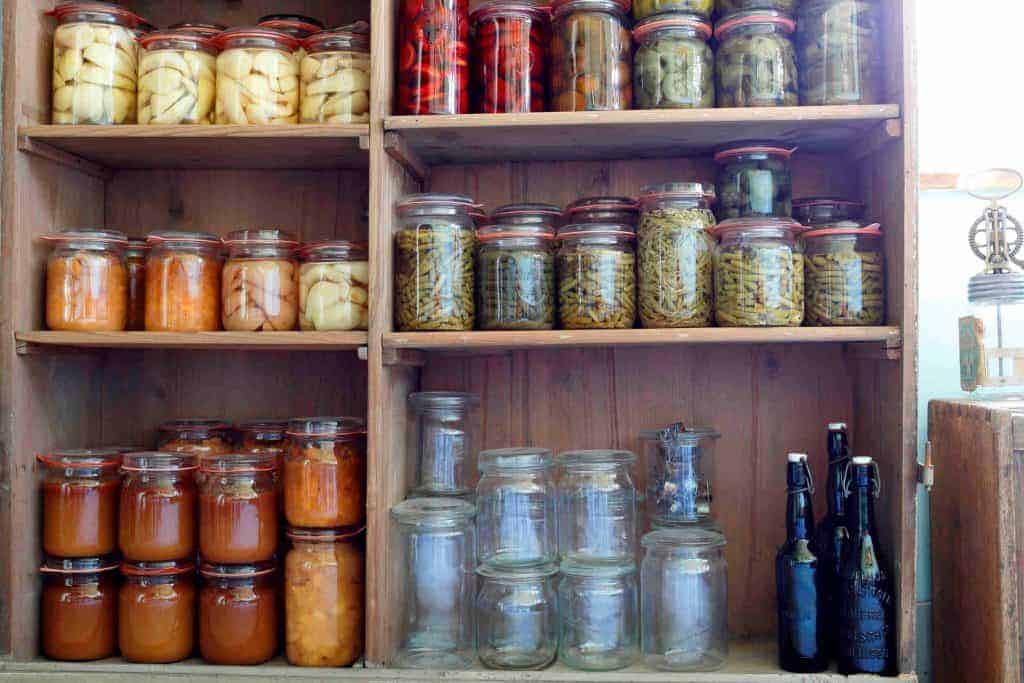Salmon is a delicious fish that can be served smoked, fried, baked, and a whole lot of other ways depending on one’s preference. Salmon served past its prime is problematic to the body, leading to nutritional loss at best, and extreme food poisoning at worst. It’s hard to identify signs of spoilage without knowing what to look for, but you can pick up common cues with practice.
How can you tell if salmon is bad? Salmon that’s gone bad can be identified through their appearance, texture, and scent. It usually looks sickly and damp, with the meat lacking its characteristic tint. Failing to note red flags could lead to food poisoning – usually histamine poisoning, which mimics allergic reactions. Salmon don’t last for very long, due to being fatty fish from cold environments.
Salmon goes bad pretty quickly, but how long should you expect them to last?
Salmon Shelf Life
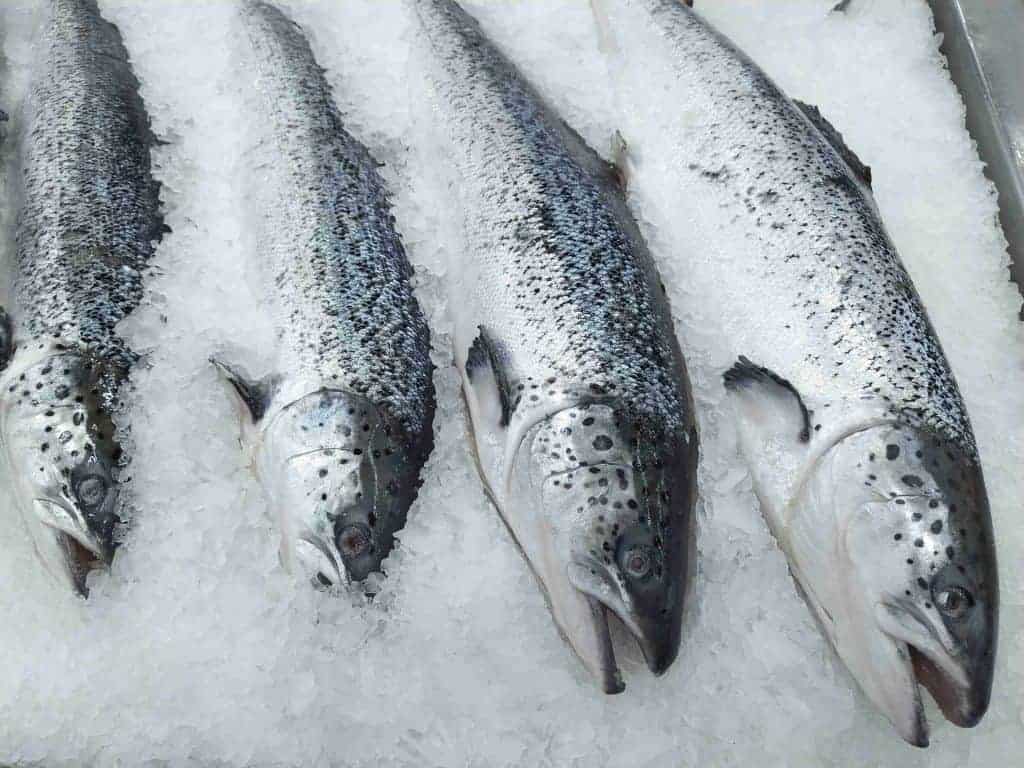
Salmon shelf life is generally much shorter than other comparable seafood, keeping for about three to four days in your fridge. Their effective fridge life is usually one to two days, owing to transport time and possible freeze/thaw cycles it likely underwent in transit.
They are considered fatty fish, which don’t last as long as their leaner counterparts regardless of storage method. Salmon also live in cold environments, which further inhibits their potential shelf life. The one perk of this is that they freeze quite well, maintaining decent quality and flavor even after thawing – leaner fish usually suffer marked loss in flavor, scent, and nutrition.
Raw salmon lasts for about two hours at room temperature, and keeps for two days max in your fridge when store-bought. Freshly-caught salmon can comfortably manage to double that, though it’s important to clean your catch to avoid propagating bacteria or mold.
Cooked salmon can be refrigerated for four days without consequence. Past that point flavor, aroma, and nutrition will decline, but the point of actual spoilage usually only comes around the seven-day mark. This will vary depending on the recipe – smoked salmon on its own will keep a bit better than meals that involve more ingredients.
How Can You Tell if Salmon Is Bad?
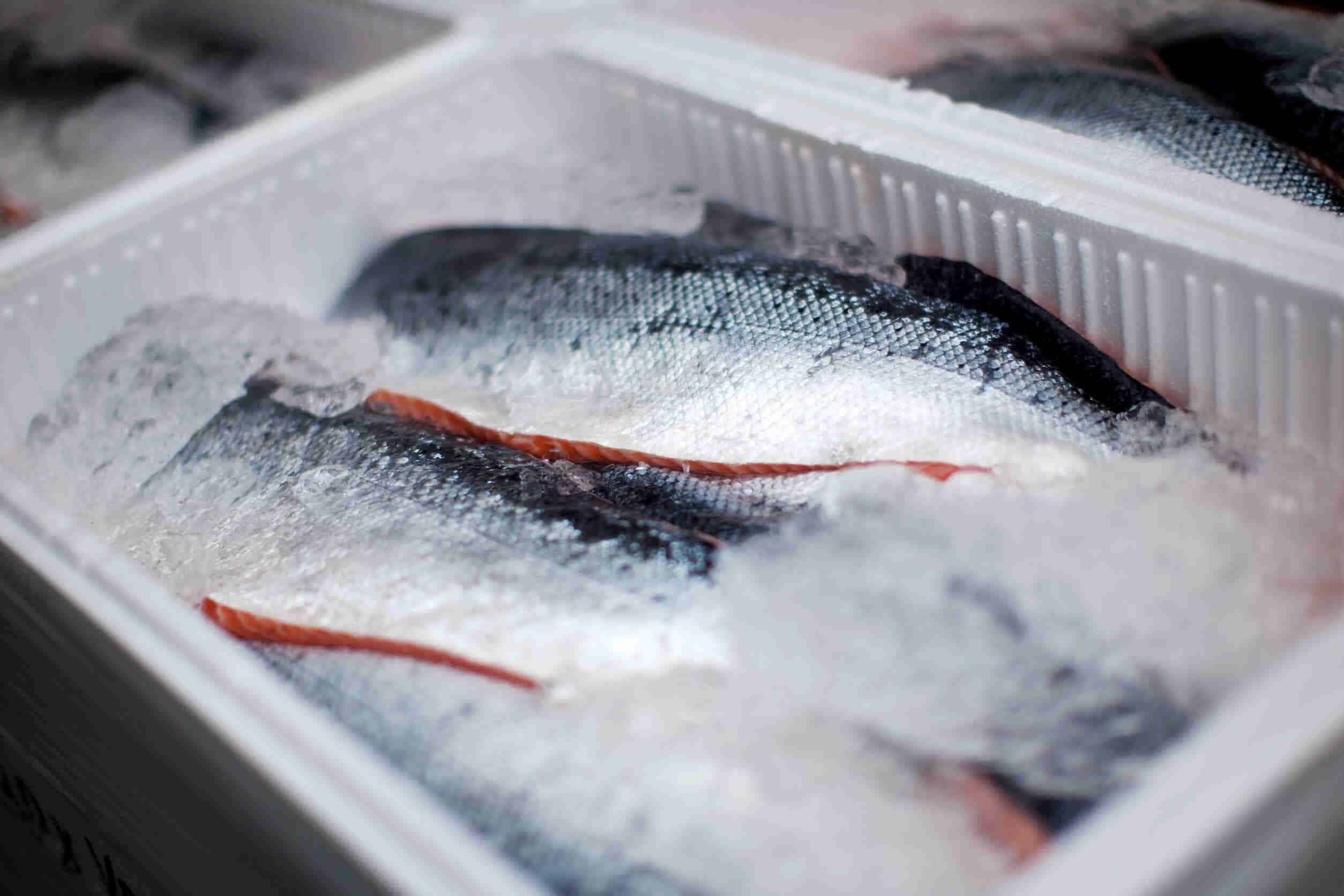
Raw Salmon has a few easy cues to work off, with everything from appearance, texture, firmness, odor, and even their eyes providing early signs to warn you of spoilage.
The more obvious indicators of problematic fish are mold, slime, or irregular growths on their body. Toss them immediately if any of these emerge. These problems are pretty easy to hide by skeevy commercial traders. You’ll want to be able to spot warnings that can’t be scrubbed away.
1. Appearance
Fresh salmon usually comes with either an orange or pinkish meat and shiny, silver skin. The meat will be segmented by small, pale lines that function as their fat stores. Their lightness makes for a reliable indicator of freshness.
If the meat has taken on a greyish tint or loses its vibrant hue, it’s likely a bit past its prime and should be avoided. The same goes for when the line segments are a bit difficult to make out.
Be mindful of the fact salmon does have existing gray meat to it. It’s the subcutaneous fat layer between the skin and flesh. This makes for a very delicious part of the fish that’s worth chowing down on. Don’t mistake normal fatty layers as a sign your fish is out of date. The issue you need to watch for is normal lean portions of salmon having dull discoloration to them.
If you’re purchasing salmon whole, watch for the gills. White gills are often a sign of fungal infection. Sticky gills usually mean they’ve been left out for too long. Neither find is desirable.
Salmon is also one of the more common fish to see black spots on, with two common reasons as to why down below.
The first could indicate Black Spot, a type of fish parasite that burrows into their skin, causing cysts and discoloration. The second possibility could simply be scar tissue and prior inflammation. Salmon in particular have unique immune cells that also produce melanin, further exacerbating the color change in their scar tissue.
It’s worth noting that neither reason renders salmon inedible. Black Spot doesn’t take to human hosts nearly as well as it does to fish, and even among aquatic life, it’s notable for doing very superficial damage at best. Scarred salmon still have plenty of choice meat and fat to them as well.
It might not look it, but dark spots aren’t necessarily a sign of spoilage. They’re still technically edible, but not quite as appetizing. We’d still advise you steer clear of them.
2. Texture
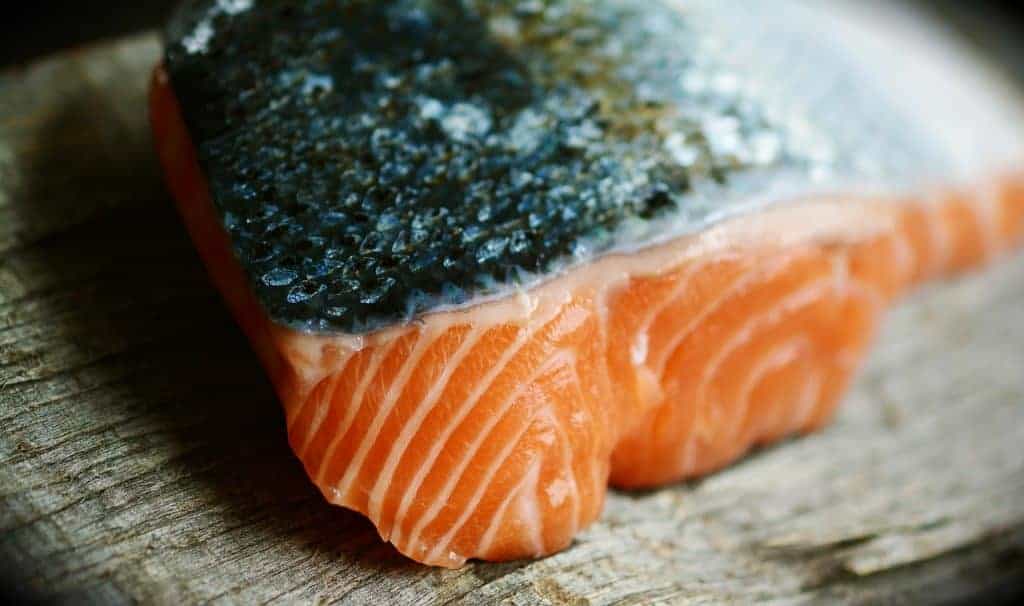
Good salmon should be firm and dry. Check that by pressing down on their fish’s flesh. It shouldn’t feel damp, slimy, or sticky – you can’t attribute any of those things to recent thawing.
Salmon differs from regular meat like chicken and beef because fish have shorter muscle fibers and notably less connective tissue. If it springs back to its original shape after a brief poke, you’re in the clear. If it stays dimpled, you’re better off passing on that one.
Salmon that feels fragile to the touch won’t be any good to use. They’ll usually end up falling apart before the recipe calls for it, and are particularly bad choices in dishes involving slow-cooking.
The meat and skin shouldn’t feel ready to flake off before you even get them into the pot. You want firmness in your salmon to better handle heat. Otherwise, they’ll break down into unpalatable mush, ruining great dinner plans.
Another way to eyeball texture – pun intended – is checking out how other features of the fish are set. Their own eyes are a great point of focus. Salmon with firm flesh usually have eyes that are set slightly and bulging out. If their sockets appear somewhat sunken into their sockets, it’s safe to assume the fish has already gone bad for a while.
3. Scent
The scent of rot is a dead giveaway for most food, but not everyone is confident in their capability of sniffing it out. This usually happens because people don’t know what they’re trying to identify, as fish smells strong even at their freshest. Attributing bad odors to the fish being fish isn’t an uncommon mistake to make, but will wreak havoc on your digestive system if you’re mistaken.
Fish that’s good to eat will smell pungent, yes, but not intolerably so. It should be relatively mild and salty, like a day out on the seashore. If you haven’t ever been to such places, the closest applicable references would be brine solutions used for cooking and food preservation.
The “off” scent happens due to decomposition setting in, with proteins denaturing due to either bacteria, parasites, or mold influence. It’ll start smelling vaguely reminiscent of ammonia, which is a common component in urine or sweat.
Salty scents are to be expected for fish. When it starts smells like an unflushed bathroom is the point you’ve got problems. The fishy scent being far too overpowering also indicates when your product needs to be disposed of.
This is due to salmon being rich in TMAO (Trimethylamine-oxide) which gets converted into TMA (trimethylamine) by fish enzymes and bacteria upon death. This leads to their characteristic rancid odor and should be distinct enough from the normal briny scent of unspoiled fish.
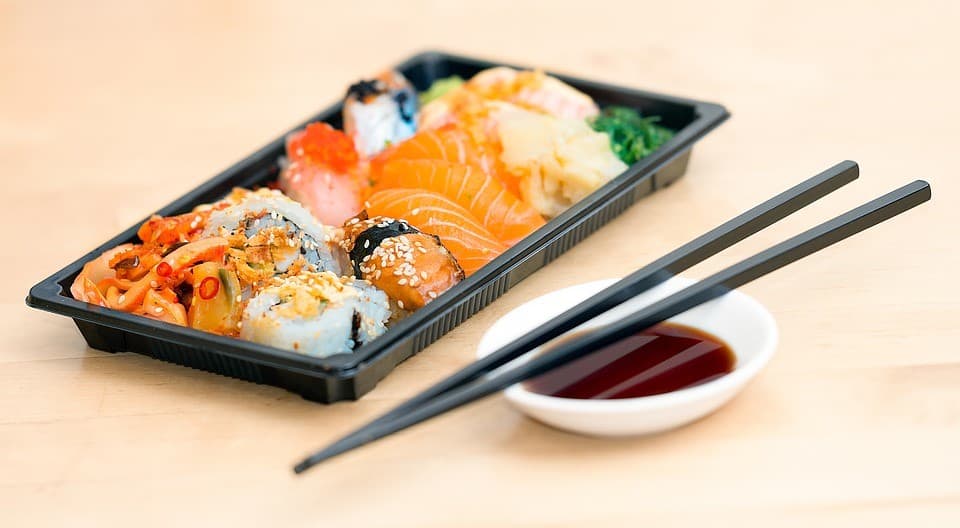
Leftovers
For the most part, leftover salmon plays by similar rules to their uncooked counterparts: slimy texture, rancid odor, and your fish not flaking (or flaking too readily, to the point of falling apart) mean you should toss the meat.
Leftover salmon also lasts for a much shorter time – two days in the refrigerator, and only two hours on the countertop. This time range is more constrained than it is for raw salmon. If your leftovers pass the two-day mark, it’s a safe bet to bin the remnants.
This goes double for ingredients particularly vulnerable to expired components. Recipes involving cheese, butter, and cream will end up unpalatable very quickly. These three also happen to add or trap moisture, which furthers the deterioration of your meat.
Dangers of Eating Spoiled Salmon
Spoiled food can do a lot of damage to your body, and that goes doubly so for rotten seafood. Even people who don’t have allergies to fish will suffer from tainted meat.
Histamine Poisoning
Also known as scombroid food poisoning, histamine poisoning occurs when one consumes fish that have been exposed to high levels of histamine.
These cases mimic allergic reactions, with common symptoms including tingling sensations in one’s mouth and nerves. This gradually incorporates more hampering side effects like disorientation, cold sweats, rashes, vomiting, and palpitations.
Histamine is very common in fermented foods like yogurt and kimchi, but any food subject to fermentation will naturally develop biogenic amines that may not play well with your digestive system. Histamine cultured this way is usually a byproduct of temperature damage sustained during the product’s transit and can be difficult to notice.
Your best option to handle them is sourcing from reputable sellers with reliable supply chains. Once the product arrives on your end, make sure to immediately store your salmon in a chilled environment (41 degrees Fahrenheit minimum) to inhibit potential histamine development.
Be especially wary if you or anyone you’re serving has a known history of histamine intolerance. People with histamine intolerance suffer more extensive symptoms from an already problematic threat. Diarrhea, asthma, and even cardiovascular complications such as hypertension and arrhythmias can emerge from the exposure, requiring urgent treatment to handle.
Stretching Out Shelf Life
While everything listed was designed to help you curate the best salmon cuts to buy – along with what to avoid – making your own fish last longer takes a bit of planning. Making the most of your salmon is a matter of smart shopping and efficient storage, which we’ll go over below.
Buying
When buying any kind of meat product while out shopping, make sure to pick them up last. The time they spend in your cart is time outside of a temperature-controlled environment, which leads to a gradual degradation in both nutrition and flavor.
Whole fish is always the better choice for longevity. Just have your supermarket butcher chop them up before you go. It won’t take too much time and can make quite a difference in how your meal plan turns out. Buying just the parts you need isn’t a bad choice provided you plan on putting them to use in your kitchen quickly.
Lastly, buy frozen salmon if you can’t guarantee it comes fresh. While this may sound unintuitive, the reasoning behind it is quite sound. Most supermarket fish were frozen during transit, often being thawed out and marketed as fresh upon arrival.
Buying them frozen and taking them home promptly is actually a better way to proceed, as it means your salmon goes through fewer thawing cycles overall. That’s only if your supplier isn’t all that reliable – if you’re sure their produce is genuinely fresh, don’t be afraid to take them on their word. Just be sure to bring it back to your freezer ASAP – every minute counts!
Storing
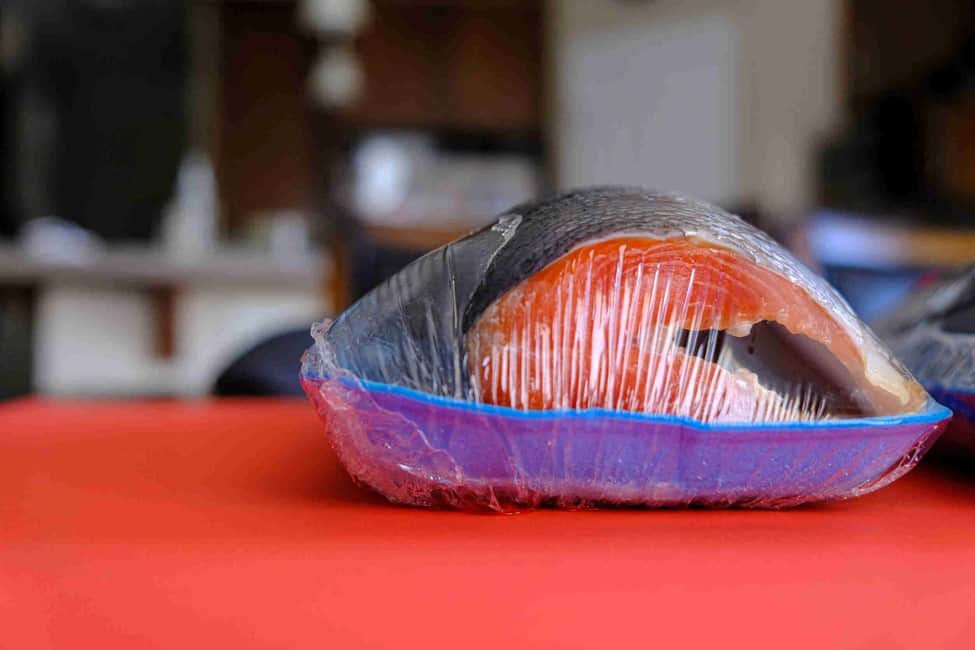
Your main enemy in the fridge is moisture. Keep your raw salmon as dry as possible, and cleanse it of any juices on its skin – these will suck out all the flavor and nutrition.
This can be done by rinsing it with cold tap water, followed by gently patting it dry with a paper towel. Follow up by either wrapping it in plastic or vacuum sealing, though the latter might end up with its own set of hiccups. Don’t forget to double wrap in aluminum, as the fishy scent may permeate the thin plastic.
Whatever your container of choice is, make sure the entire thing is sealed properly. Extra air will adversely affect your meat, and holes in the bag will render them pointless.
Not all fridges can manage their minimum temperature cutoff comfortably. Cold air sinks and that rule applies even to artificial environments. Store your salmon as low as possible in your fridge. If you aren’t confident that it’ll be cold enough, enclosing them with extra ice or gel packs can help mitigate that concern.
Cooked leftover salmon follows the same rules – airtight containers, keep as cold as possible, and nominal three-day shelf lives. Just mind the expiration date of other ingredients and defer to any likely to go bad before the salmon’s three days are up.
Final Thoughts
Salmon is absolutely delicious, but goes bad very quickly. Double check your salmon’s smell, texture, and appearance before buying. Mind the warning signs and practice proper storage methods to make the most out of your fish.

